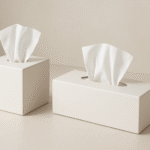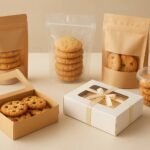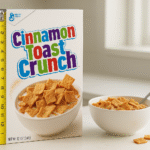Corrugated Boxes Explained: Types, Materials, and Packaging Uses

Brands strive to delight and retain their audience. They apply various tactics to achieve such goals. One of them is the safe transportation of their well-designed products. Although packaging materials come in a variety, not every material is capable of offering exceptional strength for protection purposes. Sensitive or huge goods are often the ones that require the most care. And relying on corrugated cardboard packaging is far more advantageous than you can even imagine.
Additionally, the perks of using corrugated boxes are not limited to maintaining product quality. They maintain the brand’s reputation too. Customers receiving their favorite items unharmed adore doing repeated business. Thus, resulting in business growth. Nevertheless, we will only discuss anatomy, specifications and applications of corrugated packaging boxes today.
Comprehending the Anatomy of Corrugated Material
Strength and cushioning. Both are key roles of this corrugated cardboard packaging material. For this purpose, its design comprises three layers. And the layering appears like a sandwich. This layered construction is what differentiates the corrugated material from simple paperboard. So, let’s have a look at the elaboration on these layers.
Three Main Components of Corrugated Material
First, there is the linerboard. It is a flat outer sheet of paper. Also, it is a part of the top and bottom of this structure. Next, there is an arch-shaped paper layer between two linerboards. This wavy part is glued and offers exceptional robustness to the material when stacking. The third essential component is the adhesive. It’s basically the glue we were previously conversing about. The best aspect is that this layer is biodegradable, making the entire material sustainable.
Single Wall, Double Wall & Triple Wall with Multiple Layers
Furthermore, the box can have multiple wall configurations. It depends on how the brands will utilize corrugated board boxes and how much strength they require to offer to the packaging. For instance, the typical option is the single wall. It has three layers, as formerly mentioned. Another pick is the double wall with five layers. Lastly, there is the triple wall with seven layers. It surely offers the maximum strength among these types.
Corrugated Flute Profiles and Strength Standards
Fluting is the defining feature of this material. Knowing its profile size is very important for its performance characteristics. Brands will thus learn which flute is ideal for storing their products. First is the A-Flute and it is the largest. This type is admirable for its compression strength as well as cushioning ability. Therefore, it can safeguard highly delicate products that require impact protection.
Also, cardboard packaging can have C-flute types with a medium profile size. It’s best for all-purpose use. More includes B-Flute, which is medium or thin. It has a nice print surface and can resist puncture. E-Flute is very fine and has a thin profile. However, it is a preferable choice for smooth printability. Lastly, F-Flute is also a micro-flute. Its thinness actually contributes to its premium feel.
There are two standards for measuring the strength of a finished box. This aids in assessing various sorts of pressures. One is the Edge Crush Test, also commonly written as ECT. It is modern and very crucial for shipping. Next is bursting strength, which is more traditional. It measures the force needed to burst the board face.
Composition of Corrugated Material & Sustainability Packaging
Just like the types of corrugated paper, the linerboard materials vary too. These raw materials directly impact the board’s strength and appearance. For instance, Kraft fiber is made of new wood pulp. It has high tensile strength and can resist puncture. Recycled fiber or test liner has recycled paper materials. It is quite sustainable. But lacks the purity of strength that the former kind has.
Besides, bleached liners are perfect for high-quality printing. They are premium and can easily refine the retail representation. Also, corrugated boxes are ideal for green packaging and satisfying modern consumers. They are recyclable and can naturally decompose. Even the paper comes from sustainably managed forests.
Multiple Structural Designs of Corrugated Boxes
So many types of corrugated boxes are available and can be requested through customization. Why is it so? Due to the flexibility of corrugated material. Like the regular slotted container. It is popular in shipping boxes. The reduced material waste makes it apt for high-volume shipping. Another structural type is the full overlap slotted container. It is suitable for high-density items because of its boosted strength and cushioning.
Additionally, tray and lid boxes have two key separate components. Such a style lifts heavy goods with ease, offering secure closure as well. Lastly, die-cut boxes are customized structures. Their appearances are clean and are thus preferred for e-commerce purposes. Also, their structures are cut from a single piece of board.
Practical Uses of Corrugated Cardboard Packaging
Corrugated packaging can adapt to various forms. Hence, proving that they dominate every sector. For example:
- E-commerce businesses can benefit from their cleaner looks. The B or E flute is ideal and can provide safety against parcel handling. And the quick assembly. Therefore, they can save plenty of time too.
- In conjunction with the types of packaging boxes, corrugated material can be used in retail floor displays too. Use the E or F flute because of its thinner profile. And its ability to demonstrate high-quality graphics.
- Fortunately, the sturdiness accompanies the food protective features as well. Therefore, pizzas or fruits are convenient to pack and ship by trusting this packaging. Also, they have coatings to resist grease and moisture. They are essential for warm and oily food in order to retain its quality as well as the box’s structure.
- To carry heavy goods, such as appliances and motors. Brands might combine both A and C flutes to leverage the potential of corrugated materials.
Effective Tips to Pick the Right Corrugated Cardboard Packaging
The article provided a comprehensive answer to: what is a corrugated cardboard box? Or different wall configurations and flutes. The imperative tips were basically present in almost all such sections. For example, the double and triple walls are apt for items that are too heavy. A or C, which are the larger flutes, are usable for cushioning highly delicate goods.
Moreover, the thinner flutes, E or F, offer smooth surfaces for quality graphics. Thus, they are viable for polished retail aesthetics. To prevent crushing, brands must prioritize high ECT ratings. On the other hand, die-cut mailers are advantageous for portraying branding elements. Finally, and most notably, trust our brand for further effective guidance and box provision. Boxit Packages, as a renowned custom packaging supplier, has years of collective experience. Thus, give us a call. And share your packaging requirements in detail.
Conclusion
The core material of corrugated cardboard packaging has three components. Two linerboards and one flute. These layers can help add more robustness. Moreover, we stated various flutes and their profile sizes. Knowing such types is valuable for brands in picking the right types for their products. Also, the linerboard materials vary. For instance, kraft fiber, recycled fiber and bleached liner. And the nature-safe or low-impact packaging formulates the deep connection of brands with modern customers. We also shared some tips to select the right corrugated packaging.



.jpg)